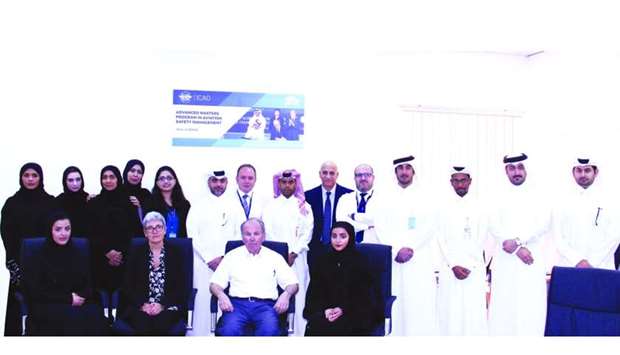Qatar Aeronautical College recently started its first postgraduate programme and "delivered" the Advanced Master in Aviation Safety Management (AMASM) course.
Developed and accredited by Ecole Nationale de l'Aviation Civile (ENAC) under the aegis of the International Civil Aviation Organisation (ICAO), the AMASM programme is designed to train safety managers.
Aviation safety is at the core of ICAO’s fundamental objectives and they strive to promote a systemic approach of safety by the implementation of a Safety Management System (SMS).
SMS is a structured process that requires organisations to address possible safety issues with the same level of priority that other core business topics are managed and to analyze them continuously, in conjunction with state institutions within their State Safety Program (SSP) and industry counterparts.
It is the formal systemic and proactive approach to anticipate and manage safety risk, as well as to initiate and achieve the necessary transformation of organisational structures, accounting, policies procedures, standard practices and regulations.
International civil aviation authorities require organisations and institutions alike to implement a Safety Management System (SMS) for the management of safety risks to reach the next level of aviation safety worldwide.
In 2018, Qatar Aeronautical College (QAC) signed a partnership agreement with Ecole Nationale de l’Aviation Civile (ENAC), to offer the Advanced Masters in Aviation Safety Management to aviation professionals to create a new generation of SMS specialists in the aviation industry.
This programme will enable the applicants to acquire a practical expertise in the development, implementation, assessment and improvement of Safety Management System and State Safety Programme.
It is specifically designed to address both executive as well as working levels, to consider the entire range of aviation organisations (aircraft operator, manufacturer, maintenance organisation, airport operator, air navigation service provider, training organisation) and to cover the interactions between these structures.
Aviation safety is at the core of ICAO’s fundamental objectives and they strive to promote a systemic approach of safety by the implementation of a Safety Management System (SMS).
SMS is a structured process that requires organisations to address possible safety issues with the same level of priority that other core business topics are managed and to analyze them continuously, in conjunction with state institutions within their State Safety Program (SSP) and industry counterparts.
It is the formal systemic and proactive approach to anticipate and manage safety risk, as well as to initiate and achieve the necessary transformation of organisational structures, accounting, policies procedures, standard practices and regulations.
International civil aviation authorities require organisations and institutions alike to implement a Safety Management System (SMS) for the management of safety risks to reach the next level of aviation safety worldwide.
In 2018, Qatar Aeronautical College (QAC) signed a partnership agreement with Ecole Nationale de l’Aviation Civile (ENAC), to offer the Advanced Masters in Aviation Safety Management to aviation professionals to create a new generation of SMS specialists in the aviation industry.
This programme will enable the applicants to acquire a practical expertise in the development, implementation, assessment and improvement of Safety Management System and State Safety Programme.
It is specifically designed to address both executive as well as working levels, to consider the entire range of aviation organisations (aircraft operator, manufacturer, maintenance organisation, airport operator, air navigation service provider, training organisation) and to cover the interactions between these structures.



